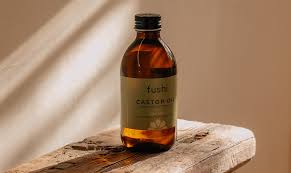When it comes to promoting healthy hair growth, oils have been a staple in beauty routines across cultures for centuries. Their rich composition of nutrients and fatty acids can nourish the scalp, strengthen hair, and improve overall hair health. In this guide, we’ll explore the benefits of using Oil for hair growth, examine some of the best oils for this purpose, and provide tips on how to use them effectively.
Why Oils Are Beneficial for Hair Growth
Oils play a crucial role in maintaining healthy hair. They can provide the essential nutrients that are often missing from our diets and help create an optimal environment for hair growth. Here are some key reasons why oils are beneficial:
- Nourishment: Oils are packed with vitamins, minerals, and fatty acids that nourish the scalp and hair. These nutrients can help strengthen hair strands, reduce breakage, and support overall hair health.
- Moisture: A well-moisturized scalp is essential for healthy hair growth. Oils help lock in moisture, preventing dryness and flakiness that can lead to hair loss and irritation.
- Circulation: Massaging oils into the scalp can stimulate blood circulation. Improved blood flow to the hair follicles ensures that they receive the necessary nutrients and oxygen, promoting faster and healthier hair growth.
- Repair: Many oils contain antioxidants that can repair damaged hair and protect it from environmental stressors such as UV rays and pollution.
Top Oils for Hair Growth
With so many options available, choosing the right oil for your hair can be overwhelming. Here are some of the most effective oils known for their hair growth-promoting properties:
1. Coconut Oil
Coconut oil is a popular choice for hair care due to its high content of medium-chain fatty acids. These fatty acids penetrate the hair shaft, reducing protein loss and enhancing strength. Coconut oil also has antimicrobial properties that can help maintain a healthy scalp.
How to Use:
Warm a small amount of coconut oil and apply it to your scalp and hair. Leave it on for at least 30 minutes before washing it out with a mild shampoo. For best results, use it once or twice a week.
2. Castor Oil
Castor oil is rich in ricinoleic acid, which has anti-inflammatory properties that can promote a healthier scalp. It also helps to improve circulation and strengthen hair follicles, potentially leading to faster hair growth.
How to Use:
Apply castor oil directly to your scalp and hair, massaging it gently. Leave it on overnight or for a few hours before washing it out. Due to its thick consistency, you may want to mix it with a lighter oil like coconut or almond oil for easier application.
3. Argan Oil
Argan oil, often referred to as “liquid gold,” is packed with essential fatty acids, antioxidants, and vitamin E. It helps to moisturize the scalp and repair damaged hair, leaving it softer and more manageable.
How to Use:
Apply a few drops of argan oil to your scalp and hair, focusing on the ends. It can be used as a leave-in treatment or a pre-shampoo conditioner. Use it regularly to see noticeable improvements in hair texture and growth.
4. Jojoba Oil
Jojoba oil closely resembles the natural sebum produced by the scalp, making it an excellent choice for balancing oil production and keeping the scalp hydrated. Its ability to moisturize without leaving a greasy residue makes it ideal for all hair types.
How to Use:
Massage jojoba oil into your scalp and hair, and leave it on for at least 30 minutes before washing it out. It can also be used as a leave-in conditioner or added to your regular hair care products.
5. Peppermint Oil
Peppermint oil is known for its invigorating scent and stimulating properties. It can help increase blood flow to the scalp, which may enhance hair growth. Additionally, peppermint oil has antimicrobial properties that can help maintain a healthy scalp environment.
How to Use:
Dilute peppermint oil with a carrier oil such as coconut or jojoba oil before applying it to your scalp. A few drops of peppermint oil mixed with a tablespoon of carrier oil should suffice. Leave it on for 20-30 minutes before rinsing out. Use it sparingly, as essential oils can be potent.
How to Apply Oil for Optimal Results
Proper application is key to maximizing the benefits of hair growth oils. Here are some tips to ensure you get the most out of your oil treatments:
1. Choose the Right Oil
Select an oil based on your specific hair needs and type. For example, if you have dry or damaged hair, opt for oils like coconut or argan oil. If you have an oily scalp, consider lighter oils like jojoba.
2. Warm the Oil
Warming the oil slightly before application can enhance its absorption and make the treatment more comfortable. Be careful not to overheat it, as excessively hot oil can damage your hair and scalp.
3. Massage Gently
Massage the oil into your scalp using your fingertips in a circular motion. This not only helps the oil penetrate better but also promotes blood circulation, which is beneficial for hair growth.
4. Leave It On
Allow the oil to sit on your scalp and hair for at least 30 minutes. For a more intense treatment, you can leave it on overnight. Use a shower cap to protect your bedding and prevent the oil from staining.
5. Wash Thoroughly
Use a mild shampoo to wash out the oil, and consider using a clarifying shampoo if the oil is particularly stubborn. You may need to shampoo twice to ensure all the oil is removed.
Conclusion
Incorporating oils into your hair care routine can significantly benefit your hair’s health and growth. By choosing the right oil and applying it correctly, you can nourish your scalp, strengthen your hair, and support its overall growth. Experiment with different oils to find what works best for you and enjoy the journey to healthier, fuller hair.




